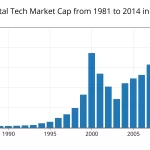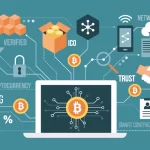Know about the internet web1.0, web 2.0, and web 3.0
The internet has undergone a remarkable evolution since its inception, transforming from a static information repository to an interactive and immersive digital ecosystem. This evolution can be categorized into three distinct phases: Web 1.0, Web 2.0, and the emerging Web 3.0. In this blog, we will explore the characteristics, advancements, and impact of each phase, highlighting the transformative journey of the World Wide Web.
Web 1.0: The Static Web Web 1.0, also known as the Static Web, represents the early days of the internet when websites primarily provided static content and one-way communication. Key characteristics of Web 1.0 include:
- Static Websites: Websites were built using HTML and CSS, offering limited interactivity and dynamic content.
- Information Consumption: Users mainly consumed information by accessing websites, which acted as digital brochures or repositories.
- Limited User Participation: Web 1.0 was characterized by a lack of user-generated content or collaboration. Websites were controlled by organizations or individuals, with limited opportunities for user interaction.
- Dial-Up Connections: Internet access was primarily through dial-up connections, limiting the speed and accessibility of web content.
Web 2.0: The Interactive Web Web 2.0 marked a paradigm shift, transitioning the internet from a static information resource to an interactive and participatory platform. Key features of Web 2.0 include:
- User-Generated Content: Web 2.0 platforms encouraged user-generated content, enabling users to create, share, and collaborate on various forms of media, including blogs, social media posts, and videos.
- Social Networking: Web 2.0 introduced social networking platforms like Facebook, Twitter, and LinkedIn, enabling users to connect, communicate, and share information with a global audience.
- Rich Media and Interactivity: Web 2.0 brought forth advancements in web technologies, allowing for the integration of rich media elements, interactive interfaces, and dynamic content.
- Crowdsourcing and Collaboration: Web 2.0 fostered collaboration and crowdsourcing, with platforms like Wikipedia harnessing collective knowledge and expertise for information creation and curation.
- Mobile Revolution: The emergence of smartphones and mobile internet connectivity expanded the reach and accessibility of Web 2.0, enabling users to access and contribute to online content on-the-go.
Web 3.0: The Intelligent Web Web 3.0, also referred to as the Semantic Web or the Intelligent Web, represents the next phase of internet evolution, characterized by intelligent, context-aware systems and seamless connectivity. Key aspects of Web 3.0 include:
- Artificial Intelligence and Machine Learning: Web 3.0 leverages AI and machine learning algorithms to understand, interpret, and process vast amounts of data, enabling personalized experiences and intelligent decision-making.
- Internet of Things (IoT): Web 3.0 incorporates the IoT, where interconnected devices and sensors seamlessly exchange data, creating a network of smart and interconnected devices.
- Enhanced Personalization: Web 3.0 aims to provide highly personalized experiences, tailoring content, services, and recommendations based on individual preferences, behaviors, and context.
- Semantic Web Technologies: Web 3.0 employs semantic web technologies, allowing machines to understand and interpret data in a meaningful way. This enables more precise search results, advanced data integration, and semantic interoperability.
- Blockchain and Decentralization: Web 3.0 embraces blockchain technology to facilitate secure transactions, decentralized applications (DApps), and digital identities, promoting trust, transparency, and autonomy.

































